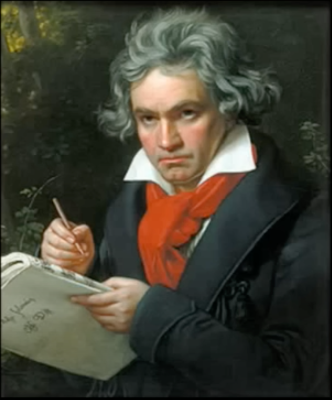Teach This Poem, though developed with a classroom in mind, can be easily adapted for remote learning, hybrid learning models, or in-person classes. Please see our suggestions for how to adapt this lesson for remote or blended learning. We have also noted suggestions when applicable and will continue to add to these suggestions online.

Listen to Beethoven’s “Moonlight Sonata.”
The following activities and questions are designed to help your students use their noticing skills to move through the poem and develop their thinking skills so they understand its meaning with confidence, using what they’ve noticed as evidence for their interpretations. Read more about the framework upon which these activities are based.
-
Warm-up: Listen to Beethoven’s “Moonlight Sonata.” After listening, what thoughts or feelings came up for you?
-
Before Reading the Poem: Look closely at the painting Oak Moon by Ben Edge. What stands out to you in this image? Why? Look again. What else do you see? (Teachers, you may wish to read the accompanying information with your students to give some context about the painting.)
-
Reading the Poem: Silently read the poem “December Moon” by Brenda Hillman. What do you notice about the poem? Note any words or phrases that stand out to you or any questions you might have.
-
Listening to the Poem: Enlist two volunteers and listen as the poem is read aloud twice, and write down any additional words and phrases that stand out to you.
-
Small Group Discussion: Share what you noticed about the poem with a small group of students. How do the resources from the beginning of class connect to the poem? Why? What do you think of the images that accompany the poem?
-
Whole Class Discussion: Read the definition of contrapuntal. Read the poem again by reading left to right across the page or left to right with each part of the poem. Discuss how these readings inform your understanding of the poem.
-
Extension for Grades 7-8: Get creative and make your own contrapuntal poem. How might your poem be read in multiple ways? As a class, create a gallery walk of poems. Discuss as a class what you notice about these poems. How does the way a poem is structured inform your reading? In what ways does the reader create their own reading?
-
Extension for Grades 9-12: Read the interview with Brenda Hillman “Our Very Greatest Human Thing Is Wild.” Write a personal and/or creative response to this essay. What are your thoughts and feelings about this piece? In your mind, what is our very greatest human thing and how does it compare and contrast to Hillman’s essay? Share your writing with your classmates.
In the interview “Voicing Counterpoint,” Tyehimba Jess explains his use of the contrapuntal sonnet form: “A contrapuntal poem has the capability of bringing two people together and having them talk in a way that is very hard to duplicate. It provides a direct back-and-forth; each line informs the other line. That lends itself to a lot of the relationships that I was observing. And it’s fun.” Read more.
